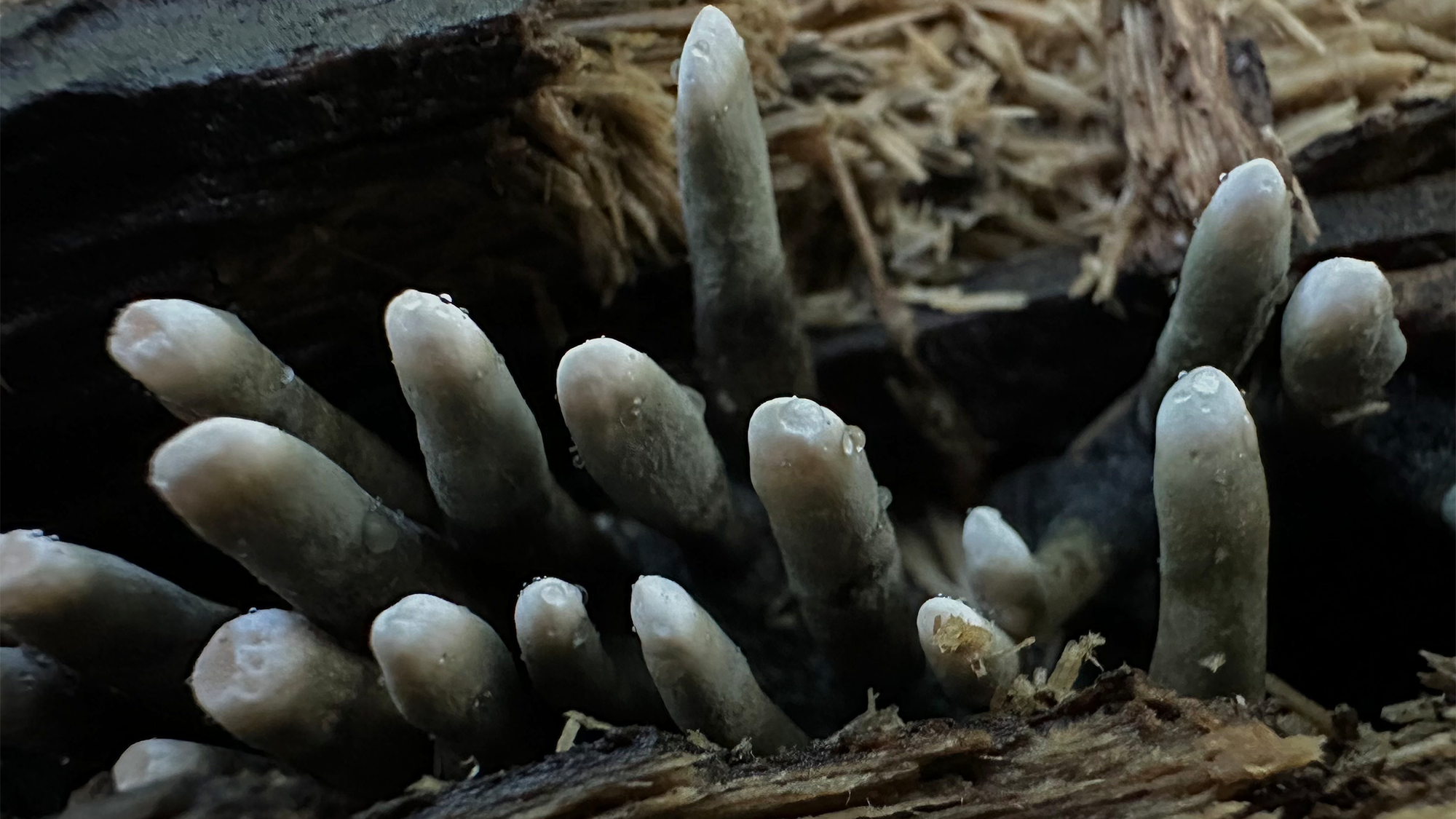

The best Halloween decorations sometimes come directly from nature. Intricate spider webs, enormous pumpkins, and a fungus that might stop you dead in your tracks. Commonly called dead man’s fingers, Xylaria polymorpha can look like decaying zombie fingers. This and other similar sinister-looking fungi in the genus Xylaria can be found throughout the United States.
“It might give off the false impression that there’s a dead body, emerging from the leaf litter, but these Xylaria fungi are wood associated,” West Virginia University mycologist Matt Kasson tells Popular Science. “They’re saprotrophs, which means they’ve made a living on dead material. And that dead material, that substrate, happens to be wood.”

Dead man’s fingers are typically seen at the bottom of decaying or dead trees, where they are breaking down the deceased wood and releasing nutrients into the soil so that new plants can grow. The black, finger-like shapes themselves are the fungi’s sexual reproductive structures. Sexual spores are produced inside tiny flask-like structures inside of each finger.
[Related: Why ladybugs and ‘Halloween beetles’ are everywhere right now.]
“Think about the pores on our skin and blackheads. When we squeeze out a blackhead, you get basically this exuded kind of glob,” says Kasson. “That’s similar to dead man’s fingers. All that black tissue is lined with these flask-like fruit bodies called perithecia.”
Xylaria are incredibly opportunistic and can release these spores for several months or even years. The structures also have a very stiff exterior, much like a real finger. While other fungi like mushrooms are more ephemeral and fall over, Xylaria’s firmness allows them to keep releasing spores and increase their chances of reproducing. They can also make wispy thread-like structures called hyphae. These grow through the dead or dying wood instead of popping up from the trunk of a tree.

Some species are known to cause black root rot, but that is typically a problem on trees or shrubs that were already stressed. According to the University of Wisconsin-Madison, this disease is found on trees including apple, crabapple, pear, cherry, plum, American elm, Norway maple, and honeylocust.
“A lot of fungi just kind of take advantage of already weakened and stressed plants. That is, maybe they were drought stressed, or maybe there was an age predisposition, meaning that they were just really old and at the end of life,” says Kasson. “So there’s a lot of fungi like dead man’s fingers that show up.”
[Related: Nightmare-fuel fungi exist in real life.]
Like with zombies themselves, it’s also important to remember that the finger is merely the tip of the iceberg and will continue to grow as long as they have the right conditions. Armillaria ostoyae–aka the humongous fungus–is considered the world’s largest living organism. The humongous fungus located in eastern Oregon covers more than 3 square miles and is estimated to be between 1,900 and 8,650 years old. So simply plucking a dead man’s finger from the base of a tree doesn’t get rid of the fungi itself.
“Fungi, in some regards, are immortal,” says Kasson. “If it’s at the base of a single tree, that tree eventually is going to run out of resources. But if it’s a forest of trees that spores can then disseminate, it can keep going on and in perpetuity.”
